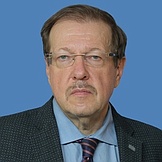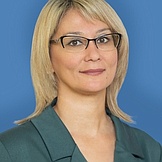Regional flags and emblems


PROFILE
Established 11 March 1936
Capital Yaroslavl
The Yaroslavl Region is part of the Central Federal District
Area 36,200 sq km
Population 1 179 300 (2025)
Ethnic groups
(2020 National Census, %)
Russian – 96,52
Other – 3,48
Administrative divisions (2024)
Municipal districts – 16
City districts – 3
Rural towns – 10
Rural districts – 67
Geography and climate
The region is located in the central East European Plain. Configuration of terrain: an undulating plain. The Borisoglebsk, Uglich and Danilov elevations extend from the southwest to the northeast. The southern part features the northern slopes of the Klin-Dmitrov ridge. There are several low-lying areas: the Mologa-Sheksna lowland in the northwest, the Yaroslavl-Kostroma and Rostov valleys in the east, and the Volga-Nerl lowland in the south.
The Yaroslavl Region borders on the Vladimir, Moscow, Tver, Vologda, Kostroma, and Ivanovo regions.
There are 5,703 rivers, 637 lakes (the biggest ones are Nero and Pleshcheyevo lakes), and Uglich, Rybinsk and Gorky reservoirs. The main rivers are the Volga and its tributaries.
The climate is temperate continental. January temperatures average –6.3°C, July temperatures average 16.5°C. Average precipitation in January is 48 mm; average precipitation in July is 80 mm. The vegetation period is between 165 and 170 days.
The region is home to the Darwin Nature Reserve, Pleshcheyevo Lake National Park, the Yaroslavsky State Nature Sanctuary, and many other natural landmarks.
Government
The legislative branch is represented by the Yaroslavl Regional Duma, which is the permanent, representative and only body of legislative authority in the region.
The Yaroslavl Regional Duma has 46 deputies elected for five years, with 34 of them running in single-mandate constituencies and the other 25 in the single electoral district in proportion to the number of votes cast for lists of candidates nominated by electoral associations.
The current Yaroslavl Regional Duma was elected in September 2023. Its term expires in September 2028.
The executive branch in the Yaroslavl Region is represented by the Governor of the Yaroslavl Region, the Government of the region and other executive agencies in the region. The Government of the Yaroslavl Region is the supreme and permanent body of executive authority in the region.
The Governor of the Yaroslavl Region is the region’s highest-ranking official who heads the executive branch, forms the Government of the region and determines the main areas of its activity. The Governor is elected for five years by Russian citizens who permanently reside in the region. The term of office of the incumbent Governor expires in September 2027.
Economy and natural resources
The economy of the Yaroslavl Region is dominated by the machine-building and chemical industries that heavily depend on defence orders. Industrial output accounts for over 30% of the regional GDP.
Many Yaroslavl plants are the leaders among respective industries and have a federal status. The biggest of these are the Avtodizel engine plant, the Slavneft-YANOS refinery, the Cordiant tire plant, the ODK-Saturn aircraft engine manufacturer, ODK-Gas Turbines, Territorial Generating Company No. 2, and others. The industrial complex is bolstered by a powerful research and technology infrastructure.
The region manufactures aircraft and ship engines, diesel motors and power installations, fuel injection equipment, gas-compressors, power stations and generators.
The petrochemical industry produces oil products, technical carbon, tires, paints and varnishes, rubber goods and plastics articles. The region holds a monopoly in Russia on the manufacture of road-rollers, saw-frames, wood-working machines, snowmobiles and photographic paper.
The food industry accounts for 23% of the total. Industrial enterprises process grain (flour milling plants in Yaroslavl and Rybinsk), produce pastries (factories in Yaroslavl and Rybinsk) and canned vegetables and milk. There is a powerful cheese-making industry (Uglich, Danilov, Poshekhonye and Prechistoye). The region is dotted by bread and dairy factories, pasta-making plants, and meat-packing businesses. Baltika-Yaroslavl, a subsidiary of Baltika Breweries, is one of the biggest beer producers in Russia.
Agriculture accounts for over 4% of the regional GDP. The stock-breeding sector specialises in beef and dairy production and poultry-raising. The crop-farming sector produces rye, flax, potatoes, vegetables and fodder.
The local energy complex includes three thermal power stations in Yaroslavl, the Uglich Hydroelectric Power Station, the Rybinsk Hydroelectric Power Station, and others.
The region has long been an important transport and trade hub in northeastern European Russia.
Mineral extraction does not have a large share in the local industrial balance.
Culture and tourism
Tourism – mostly cultural tourism (museums, ethnography) – is a prioritised and rapidly developing local industry. Business, educational, recreational, environmental and health tourism is also on the rise.
Three cities in the region – Yaroslavl, Rostov the Great and Pereslavl-Zalessky – have been included in the national tourist route known as the Golden Ring of Russia. The historical centre of Yaroslavl is on the UNESCO World Heritage List. The city boasts 800 architectural monuments protected by the state. There are over 250 museums in the Yaroslavl Region.
Recreational tourisms and water-related leisure activities are of equal importance. In addition to the Volga River, whose banks are home to the majority of historically significant settlements, there is the Rybinsk Reservoir, Europe’s biggest man-made sea. The reservoir is 30 m deep in some places and this offers unique opportunities for cruises, diving, yachting and underwater photography.
There are also some very original museums in the region, including the Mouse Museum in Myshkin, the Russian Vodka History Museum in Uglich, the Merchant Museum and the Frog Princess Museum in Rostov, and the Baklusha Museum at Semibratovo.
The Yaroslavl Region hosts numerous exhibitions, celebrations and festivals, including the internationally prominent Transfiguration Choir and Bell Music Festival, the Jazz Over Volga Festival, the Volkov International Festival of Provincial Theatres, and many others.


